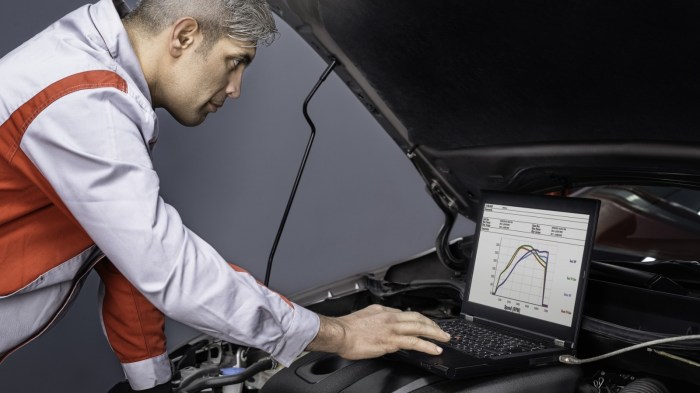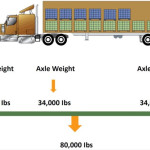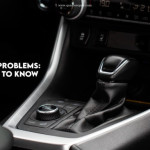Vehicle Maintenance & Preparation
Ways to optimize car performance for long-distance travel – A well-maintained vehicle is crucial for a safe and efficient long-distance journey. Proper preparation minimizes the risk of unexpected mechanical problems and ensures a smoother, more comfortable trip. This section details essential pre-trip maintenance tasks to optimize your vehicle’s performance.Thorough pre-trip maintenance is not just about avoiding breakdowns; it’s about maximizing your vehicle’s performance and minimizing potential stress during the journey.
By addressing potential issues proactively, you can enjoy a more comfortable and reliable experience, focusing on the destination rather than worrying about mechanical problems.
Crucial Pre-Trip Maintenance Tasks
Pre-trip maintenance involves a systematic check of various vehicle components to ensure optimal performance and safety. This proactive approach reduces the likelihood of unexpected issues during the long journey.
- Engine Oil Check: Verify the engine oil level and quality. Use the dipstick to confirm the oil level is within the recommended range. Low oil levels can lead to engine damage, while overly high levels can also cause issues. Check for signs of contamination or unusual consistency.
- Coolant Inspection: Ensure adequate coolant levels and proper mixture in the cooling system. Coolant is essential for maintaining engine temperature, preventing overheating. Check the coolant level and condition. Inspect for leaks and ensure the coolant is the correct type for your vehicle. An improper mixture or low coolant level can lead to engine damage.
- Brake Fluid Inspection: Inspect brake fluid levels and condition. Brake fluid absorbs moisture over time, which reduces its effectiveness. Ensure the brake fluid is within the proper level and condition. A low level or contaminated fluid can impact braking performance, which is a critical safety concern.
- Battery Health Check: Test the battery’s voltage and condition. A weak or failing battery can hinder starting and electrical systems. Use a multimeter to measure the battery voltage. Observe for signs of corrosion or damage.
- Electrical System Preparation: Verify all electrical components are functioning correctly. Ensure all lights, wipers, and other electrical systems are working properly. This will reduce the likelihood of electrical problems during the trip.
Essential Tools and Supplies
Having the right tools and supplies can be invaluable when dealing with unexpected mechanical issues. Prepare a kit containing tools for minor repairs and common issues.
- Basic Tool Kit: Include a wrench set, screwdriver set, pliers, and a socket set. This allows for addressing simple mechanical issues, such as tightening loose bolts or replacing a fuse.
- Spare Parts: Carry essential spare parts, such as fuses, bulbs, and other small parts that might be needed.
- First Aid Kit: Include basic first aid supplies, bandages, antiseptic wipes, and pain relievers.
- Emergency Supplies: Pack emergency supplies such as water, food, blankets, and a flashlight.
Tire Condition Inspection
Tire condition is critical for safety and fuel efficiency. Inspect tires regularly for optimal performance.
- Tire Pressure: Check tire pressure regularly using a tire pressure gauge. Ensure the pressure matches the recommended value for your vehicle, typically found in the owner’s manual. Improper tire pressure can impact fuel efficiency and tire life.
- Tread Depth: Use a tread depth gauge to check the remaining tread depth on each tire. Low tread depth increases the risk of hydroplaning and reduces traction.
- Overall Condition: Visually inspect tires for any signs of damage, such as cuts, bulges, or uneven wear. Inspect for proper alignment.
Fluid Level Checklist
Regularly checking fluid levels ensures optimal engine performance and prevents potential damage.
| Fluid | Optimal Level | Importance |
|---|---|---|
| Engine Oil | Within the dipstick markings | Lubricates engine components, preventing wear and tear. |
| Coolant | Within the reservoir | Regulates engine temperature, preventing overheating. |
| Brake Fluid | Within the reservoir | Essential for proper braking performance. |
Fuel Efficiency & Optimization
Optimizing fuel economy is crucial for long-distance journeys, impacting both your wallet and the environment. Proper driving techniques, fuel type selection, and understanding aerodynamic considerations significantly influence your vehicle’s fuel efficiency. This section details strategies to maximize fuel economy during extended drives.
Strategies for Maximizing Fuel Economy
Effective driving techniques are paramount for achieving optimal fuel economy. Consistent speeds, avoiding rapid acceleration and braking, and maintaining a steady pace contribute to reduced fuel consumption. Using cruise control on highways, when appropriate, can maintain a consistent speed and help reduce the amount of gas needed to keep your car moving at a steady pace.
Different Driving Techniques to Reduce Fuel Consumption, Ways to optimize car performance for long-distance travel
Maintaining a consistent speed, avoiding rapid acceleration and braking, and utilizing cruise control (when appropriate) are key strategies for optimizing fuel economy. Smooth transitions between acceleration and deceleration minimize fuel loss. Anticipating traffic conditions and maintaining a safe following distance reduces unnecessary braking and acceleration. Gentle acceleration and braking minimizes fuel consumption. Maintaining a consistent speed, using cruise control, and anticipating traffic are all essential to maximizing fuel efficiency.
Comparison of Fuel Types and Their Impact on Vehicle Performance
Various fuel types affect vehicle performance differently. Premium gasoline, often formulated with higher octane ratings, may offer slightly improved performance in high-performance vehicles. However, the difference in fuel economy between premium and regular gasoline is often minimal for most vehicles. Diesel fuel, in some cases, can provide higher fuel economy, but its use is tied to the availability of diesel infrastructure.
The choice of fuel type should consider vehicle specifications and local availability.
Benefits of Eco-Friendly Driving Habits
Eco-friendly driving habits not only improve fuel efficiency but also reduce harmful emissions. Reducing acceleration and braking, maintaining consistent speeds, and avoiding idling contributes to a smaller carbon footprint. Using eco-friendly driving habits minimizes emissions and contributes to a more sustainable transportation system. This includes driving at moderate speeds and using efficient gear changes.
Aerodynamic Factors Affecting Fuel Efficiency
Aerodynamic drag significantly impacts fuel economy during long journeys. Reducing wind resistance, such as by ensuring your vehicle is clean and free of unnecessary items on the roof, helps maintain efficiency. Proper tire inflation and careful cargo management are also important factors in minimizing aerodynamic drag. Aerodynamic efficiency significantly influences fuel consumption during extended driving periods.
Driving Habits and Their Fuel Efficiency Impacts
| Driving Style | Fuel Economy (mpg) | CO2 Emissions (per mile) | Tips for Improvement |
|---|---|---|---|
| Aggressive driving (frequent acceleration/braking, high speeds) | 15-20 mpg | 25-30 g CO2/mile | Maintain a consistent speed, avoid rapid acceleration and braking, use cruise control appropriately. |
| Moderate driving (consistent speed, smooth transitions) | 25-35 mpg | 15-20 g CO2/mile | Maintain a steady pace, anticipate traffic conditions, and use cruise control. |
| Eco-friendly driving (smooth acceleration/braking, low speeds) | 35-45 mpg | 10-15 g CO2/mile | Prioritize smooth transitions, maintain a low but safe speed, and avoid idling. |
Route Planning & Navigation

Source: slashgear.com
Careful route planning is crucial for maximizing fuel efficiency and minimizing travel time during long-distance journeys. Properly assessing road conditions, traffic patterns, and potential delays can significantly impact the overall experience. This section delves into strategies for optimizing routes using navigation tools and apps, and highlights important considerations for rest stops, fuel stations, and potential maintenance needs.Effective route planning is more than just getting from point A to point B.
It’s about anticipating potential issues and mitigating risks, ensuring a smoother and more efficient trip. By incorporating factors like traffic, road closures, and fuel availability, drivers can save both time and money.
Route Optimization Strategies
Careful route planning involves considering several key elements. Understanding road conditions is paramount. Real-time updates on road closures, construction zones, and hazardous weather are vital for avoiding delays and unexpected detours. Traffic patterns and congestion levels are equally important. Predictive traffic models, available in many navigation apps, can help anticipate delays and suggest alternative routes to avoid bottlenecks.
Account for potential delays, especially during peak hours or on weekends.
Navigation Tools and Apps
Navigation tools and apps are essential for optimizing long-distance routes. They offer various features, from real-time traffic updates to fuel-efficient route suggestions. Choosing the right tool can significantly impact the success of a long-distance trip. Features to consider include real-time traffic information, alternative route suggestions, and fuel-efficiency optimization.
Comparison of Navigation Tools
Different navigation tools offer varying levels of functionality and ease of use. The best choice often depends on individual preferences and specific needs. A comparison table below illustrates some key features of popular apps.
| App Name | Features | Ease of Use | Accuracy |
|---|---|---|---|
| Google Maps | Real-time traffic, satellite view, offline maps, public transit options | Very easy to use, intuitive interface | Generally accurate, but can be affected by real-time traffic changes |
| Waze | Community-based traffic reports, speed cameras, live incident alerts | Easy to use, with a focus on community input | Highly accurate, often benefiting from real-time user feedback |
| Apple Maps | Integrated with Apple ecosystem, turn-by-turn directions, offline maps | Intuitive and user-friendly, especially for Apple users | Generally accurate, with features that complement the Apple ecosystem |
| Sygic GPS Navigation | Offline maps, detailed navigation, voice guidance, fuel-efficient routes | Easy to learn and use, with a focus on detailed navigation | Highly accurate, particularly for areas with limited cell service |
Planning for Rest Stops and Fuel
Strategically planning for rest stops and fuel stations is essential. Long-distance travel requires breaks to avoid driver fatigue. Planning for rest stops along the route allows for rest and meal breaks. Identify rest areas and services along the planned route. Likewise, identify fuel stations along the route and plan refueling stops to avoid running out of fuel in remote areas.
Considering Maintenance Needs
Anticipating potential maintenance needs is a vital aspect of long-distance planning. Regular checks of tire pressure, oil levels, and coolant are recommended. Checking the condition of the vehicle’s lights and signals before a long trip is also crucial.
Driver Comfort & Safety: Ways To Optimize Car Performance For Long-distance Travel

Source: isu.pub
Long-distance driving can be demanding, taxing both physical and mental resources. Prioritizing driver comfort and safety is crucial for a successful and enjoyable journey, as well as for maintaining optimal performance and preventing accidents. Addressing fatigue, ergonomic factors, stress management, and essential safety precautions are all integral components of a safe and comfortable driving experience.Effective strategies for driver comfort and safety are paramount to minimizing risks associated with extended journeys.
This encompasses recognizing the impact of fatigue, adapting the vehicle for optimal ergonomics, proactively managing stress, and ensuring the vehicle is equipped with necessary safety provisions.
Maximizing Driver Comfort
Maintaining a comfortable driving position is essential to avoid discomfort and fatigue. Proper posture and ergonomic adjustments within the vehicle are key to a comfortable and safe journey. Adjusting the seat, steering wheel, and mirrors to accommodate individual preferences and body types can significantly reduce strain and discomfort during extended periods of driving. This proactive measure enhances overall driver well-being and promotes a more focused and safe driving experience.
Minimizing Fatigue During Long Trips
Fatigue is a significant safety concern during long-distance journeys. Regular breaks are essential for maintaining alertness and reducing the risk of accidents. Drivers should plan rest stops strategically, allowing ample time for rest and relaxation. Short breaks every two hours, or even shorter breaks more frequently, can be beneficial for maintaining focus and preventing drowsiness. Considering the individual’s tolerance for fatigue, longer breaks might be needed for longer driving stretches.
Furthermore, maintaining a consistent sleep schedule before a long trip helps prepare the body for the demands of driving.
Importance of Driver Rest and Breaks
Regular rest breaks are not just about comfort; they are vital for safety. Prolonged driving without adequate rest significantly increases the risk of accidents. Drivers experience a decline in reaction time, judgment, and alertness when fatigued. Rest breaks allow the body to recover, refresh the mind, and regain focus. The National Highway Traffic Safety Administration (NHTSA) emphasizes the importance of rest and breaks, highlighting that fatigued drivers are a major contributor to traffic accidents.
Ergonomic Adjustments in the Vehicle
Ergonomic adjustments are crucial for a comfortable driving experience. Adjusting the seat position, steering wheel height, and headrest ensures a proper driving posture, minimizing strain on the body. This includes adjusting the seat for proper lumbar support, the steering wheel for a comfortable reach, and the headrest to prevent neck strain. Proper ergonomic adjustments significantly reduce the risk of musculoskeletal discomfort and contribute to a more focused and efficient driving experience.
Strategies for Managing Stress and Staying Focused
Stress and distractions can significantly impair driving performance. Techniques for managing stress during long journeys are vital for safety. These strategies include maintaining a positive mindset, listening to relaxing music, using audio books or podcasts, or even engaging in short stretches to maintain alertness and reduce mental fatigue. Visual distractions should be minimized, and a focused driving approach should be practiced.
Safety Essentials for a Long-Distance Trip
A comprehensive list of safety essentials is crucial for any long-distance trip. This list should include a first-aid kit, emergency flares, jumper cables, a cell phone charger, a flashlight, and a fully charged mobile device. Carrying a portable GPS device or having a well-updated navigation app on your phone is also advisable.
Maintaining Proper Posture and Hydration
Maintaining proper posture is crucial for preventing discomfort and fatigue during extended driving periods. Maintaining a relaxed and upright posture is key. Taking regular breaks and stretching can help alleviate muscle tension and improve blood circulation. Hydration is equally important, as dehydration can significantly impair alertness and judgment. Drinking plenty of water throughout the trip is crucial for maintaining focus and physical well-being.
Avoid sugary drinks and excessive caffeine, which can have adverse effects on alertness.
Vehicle Performance Enhancements (Optional)

Source: jansatta.com
Taking your long-distance journey to the next level often involves considering performance upgrades. While not essential for all trips, these modifications can offer tangible benefits in terms of acceleration, fuel economy, and overall driving experience. However, it’s crucial to weigh the potential advantages against the costs and potential drawbacks.Engine tuning, aftermarket parts, and careful maintenance of upgraded components are all key factors to optimize performance gains without jeopardizing reliability.
Understanding the nuances of these choices is vital for a successful and satisfying long-distance expedition.
Engine Tuning Techniques
Engine tuning aims to optimize fuel efficiency and power output. Various methods exist, from software modifications to physical adjustments to the engine’s components. Properly implemented tuning can significantly improve fuel economy, reducing operating costs. However, improper tuning can lead to decreased reliability or even damage.Software tuning allows adjustments to the engine’s control unit, enabling optimized fuel delivery and ignition timing.
Chip tuning is a common approach, replacing or modifying the existing engine control unit (ECU) software. Specialized tuning companies can perform this service. However, some manufacturers offer factory-authorized tuning options.
Aftermarket Performance Parts
Aftermarket performance parts offer a variety of enhancements. These include upgraded exhaust systems, performance air filters, and high-flow fuel injectors. Upgrading these components can lead to increased power and responsiveness. However, it’s crucial to select components compatible with the vehicle’s design and intended use.For instance, an upgraded exhaust system can improve the engine’s breathing capacity, leading to better performance.
However, some upgrades may be incompatible with existing components or may alter the vehicle’s sound characteristics. Carefully researched selection is key.
Regular Servicing of Upgraded Components
Regular servicing is paramount when incorporating performance upgrades. Components like exhaust systems, intake manifolds, and fuel injectors require specific maintenance procedures. Manufacturers’ recommendations and instructions should always be followed for optimal longevity. Ignoring these procedures could lead to early component failure and reduced performance.Maintenance schedules should be adjusted to accommodate the added components and their unique needs.
Regular inspections and replacements are essential for ensuring optimal performance and longevity.
Potential Downsides and Costs
Performance upgrades often come with a price tag. These costs include the cost of parts, installation, and potential labor charges. Moreover, some upgrades might void vehicle warranties. It is crucial to consider these costs alongside the potential benefits.Additionally, some upgrades can lead to increased fuel consumption, higher maintenance costs, or even a reduction in reliability if not properly installed or maintained.
A thorough cost-benefit analysis is recommended.
Performance Upgrade Options
| Upgrade Type | Benefits | Costs | Potential Drawbacks |
|---|---|---|---|
| Engine Tuning | Improved fuel efficiency, enhanced power | Variable, depending on complexity | Potential for reduced reliability if improperly tuned |
| Exhaust System Upgrade | Improved engine breathing, enhanced sound | Variable, depending on material and design | Potential for increased noise levels, voiding of warranty |
| Performance Air Filter | Increased air intake, enhanced engine response | Generally affordable | Potential for reduced efficiency if not properly maintained |
| High-Flow Fuel Injectors | Improved fuel delivery, increased power | Variable, depending on the injectors | Potential for increased fuel consumption if not properly tuned |


